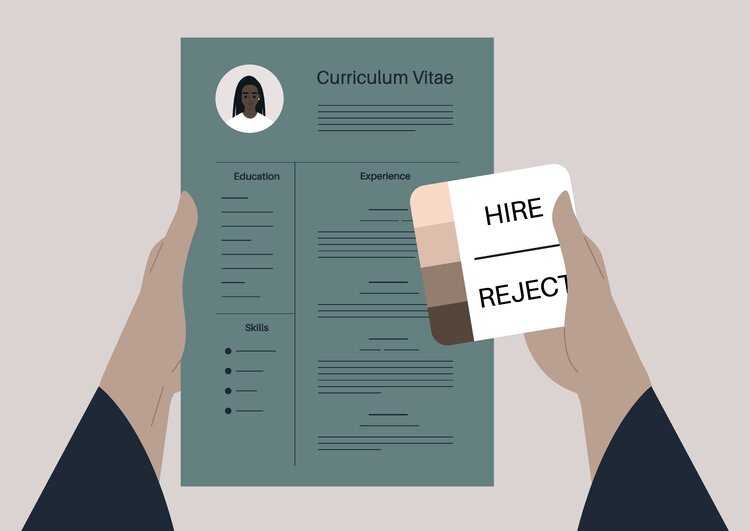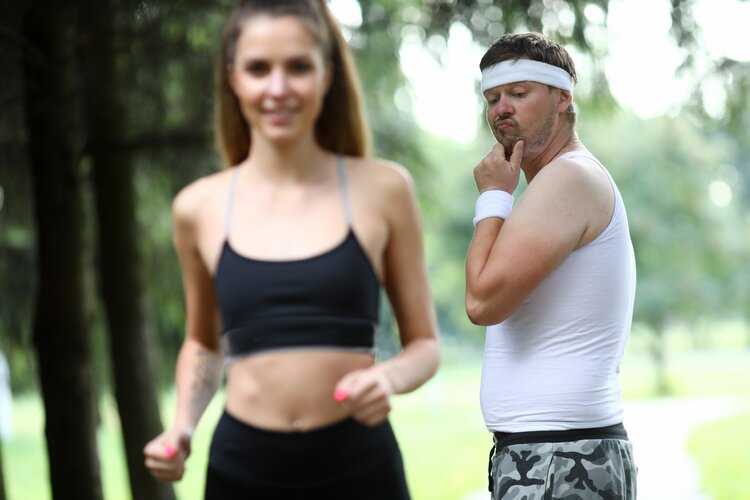

Honest words from a former recruiter.
It would be fantastic if...
- age, gender, ethnicity and marital status did not play a role in an application.
- recruiters spent just one minute on each application or at least read the application carefully.
- application photos did not play a role in the decision-making process.
So, basically if each and every candidate could get a chance. Unfortunately, this is not the case. If you are aware of these dark sides of the recruiting world, you can get through the application phase less stressed. And that is exactly my goal with this article.
DISCRIMINATION
Let's start with a classic: discrimination. First, we need to understand what the problem is. Here's a little story: A few years ago, Amazon wanted to ban discrimination from the selection process of new employees once and for all. Indeed, the company's management correctly recognized that it was in the company's best interest to hire the best and most suitable people and not, for example, the best and most suitable white athletic men. For this purpose, Amazon developed an AI that would take care of the entire pre-selection process in a fully automated way. Then, the managers would only have to send out the invitations for the job interviews. Sounds good, right? Software isn’t biased after all. However, it turned out that the AI was clearly discriminating against women. When the case was examined in more detail, the cause was pretty obvious: Amazon's AI had proceeded just like any other AI. It analyzed datain former resumes and used it to create an ideal applicant profile for each job. To do this, it simply checked who had been hired for the jobs in the last ten years. And these were predominantly men... No wonder Amazon got rid of the AI pretty quickly. This example shows where prejudice and discrimination come from: almost always from hiring managers. But there can be very different reasons for this.
For ethnicity, there is nothing we can gloss over and, unfortunately, there is little we can do about it (except simply do better ourselves!). You definitely don't want to work for a racist anyway... Sometimes it is not the fault of the managers, but of the HR department. I experienced this personally when I moved to Germany. Once a working student in recruiting simply rejected my application without checking it – simply based on my name. What can you do about it? Well, regarding the prejudiced people you cannot do much. However, you should submit a great application that HR or recruiters can hardly ignore. Take your time and get help with it, too. For example, hire a someone to do the language proofreading!
Age is also a difficult case. Hiring managers usually discriminate against older candidates for two reasons: Either the job is physically or mentally straining which is – according to the managers – difficult for older employees to bear, or they discriminate against older candidates due to lack of trust in their expertise. For example, their expertise is considered outdated, or they are assumed to be unable or unwilling to learn anything new. Of course, in many countries – such as the US, UK or Canada – it is no longer common to list your age in your application. But let's face it, in order to hide your age, you have to remove your age from your LinkedIn profile as well as your earlier work experience from your CV and of course from LinkedIn. Is it worth that hassle? I think not. Where prejudices against older people prevail, you can hardly convince them in the job interview. And let's face it, do you want to waste your time on such interviews?
Personally, I think a much better strategy is to proactively address this very issue in your resume or cover letter. If you are applying for a job with relatively high physical demands and you are over 50 years old, but you regularly do weight training, you should definitely mention this in your resume. If you are applying for an office job, show that your expertise is up to date by providing evidence of further education or training!
Important: If you find it hard to cope with physical strain, don't apply for jobs where you actually have to lift heavy objects all day. If you're applying for an office job but don't feel up to MS Office applications, take a crash course first.
Marital status: This is where women are often disadvantaged. Of course, mothers are not the only ones responsible for their children, and fortunately more and more fathers are taking an active part in raising their children. However, the prejudices persist. Women with younger children miss more days of work. They are – from a purely economic perspective – a worse deal for companies compared to childless women. There is no perfect strategy here. A lot also depends on whether there is an oversupply of your skills in the market. Sometimes it pays off to be transparent, for example by mentioning in your cover letter that you are looking for a job that allows you to pick up your kids from daycare at 3:00 p.m. and possibly work from home. If there is a lot of competition, I would advise against being too transparent in your application. Nevertheless, be sure to bring up the subject in the interview if you've already made a good impression. If the manager is empathetic and flexible enough, you can usually find a solution.
SUPERFICIALITY OF RECRUITERS
Well, recruiters are only human (at least since the recruiter AI was abolished by Amazon... 😊). Recruiters usually work under a lot of time pressure because they often get 100-200 resumes for one job. So, it's almost a necessity for them to be reasonably superficial, otherwise they couldn’t manage their workload.
So, what can you do about it? You can definitely make their job easier! Therefore, pay attention to these aspects:
- Complete application documents: An up-to-date CV, a cover letter that is customized to the job you are applying for, school and work references simply belong.
- Aesthetic design of the application documents: This will help you stand out from the crowd. Once you get the recruiters' attention, you just have to convince them with the content. 😊
- Tailor your CV to the job: If the job description calls for specific experiences or skills, make sure they are placed prominently in your application (for example, in your short profile on your resume).
In summary, recruiters spend an average of five to ten seconds reviewing an application (more or less depending on the desired qualifications). However, this does not mean that every application only gets ten seconds of attention; some only get two seconds, while others get five minutes. Make sure your application deserves those five minutes!
Tip: You can get helpful tips on how to do this in our Resume Guide!
APPLICATION PHOTO
What is the benefit of an application photo for the employer? Well, in most cases none at all. Unless the job requires you to have a lot of personal customer contact with a sales focus. But funny enough, even the applications of backend developers have better chances with a photo… Maybe it's because we humans are visual creatures and like to put a "face to the name."
In the US, UK, Ireland or Canada, however, you have to be careful, because applications with photos are not welcome there. This is due to their current legal framework. Recruiters are afraid of being sued by rejected applicants who claim that they were rejected because of their appearance (or ethnicity). To avoid this legal risk, some companies even go so far as to directly reject applications with application photos.
Nevertheless, every recruiter and hiring manager would like to get an application photo (and is going to look for one on your LinkedIn profile...) and this can benefit you in several ways. A good photo helps you to stand out from the crowd and people remember faces much easier than bars and bullet points. So, what can you do? Well, you can add links to your resume. For example, you can simply link your LinkedIn profile or if you are applying for a job in the creative sector, modeling or acting, you can link your portfolio website or Instagram (with your profile picture).
If you're going that way, yes, you need a good portrait shot. What should you look out for?
A photo can serve as a basis for a whole lot of prejudice. So, choose a portrait photo that shows you in the best light! 😊
- For example, if you are pierced, it is better not to wear the piercing(s) for the application photo.
- Choose a photo that shows you at your best. 😊 I know it may sound strange, but I have already experienced several situations in which the candidate seemed much more pleasant "live" than the photo would suggest...😊
- Have the application photo either shot by a photographer or use your cell phone: fix your hair, make sure you have good lighting and smile! Take ten photos and choose the best one.
- Don't be "too much!" A common mistake is to use a photo that would be more appropriate for Tinder. For most jobs, this is rather counterproductive.
My final advice to you is to do everything you can to avoid being discriminated against in the application process, but don't waste a lot of time and especially nerves on it if it does happen. You deserve an employer who values you!

